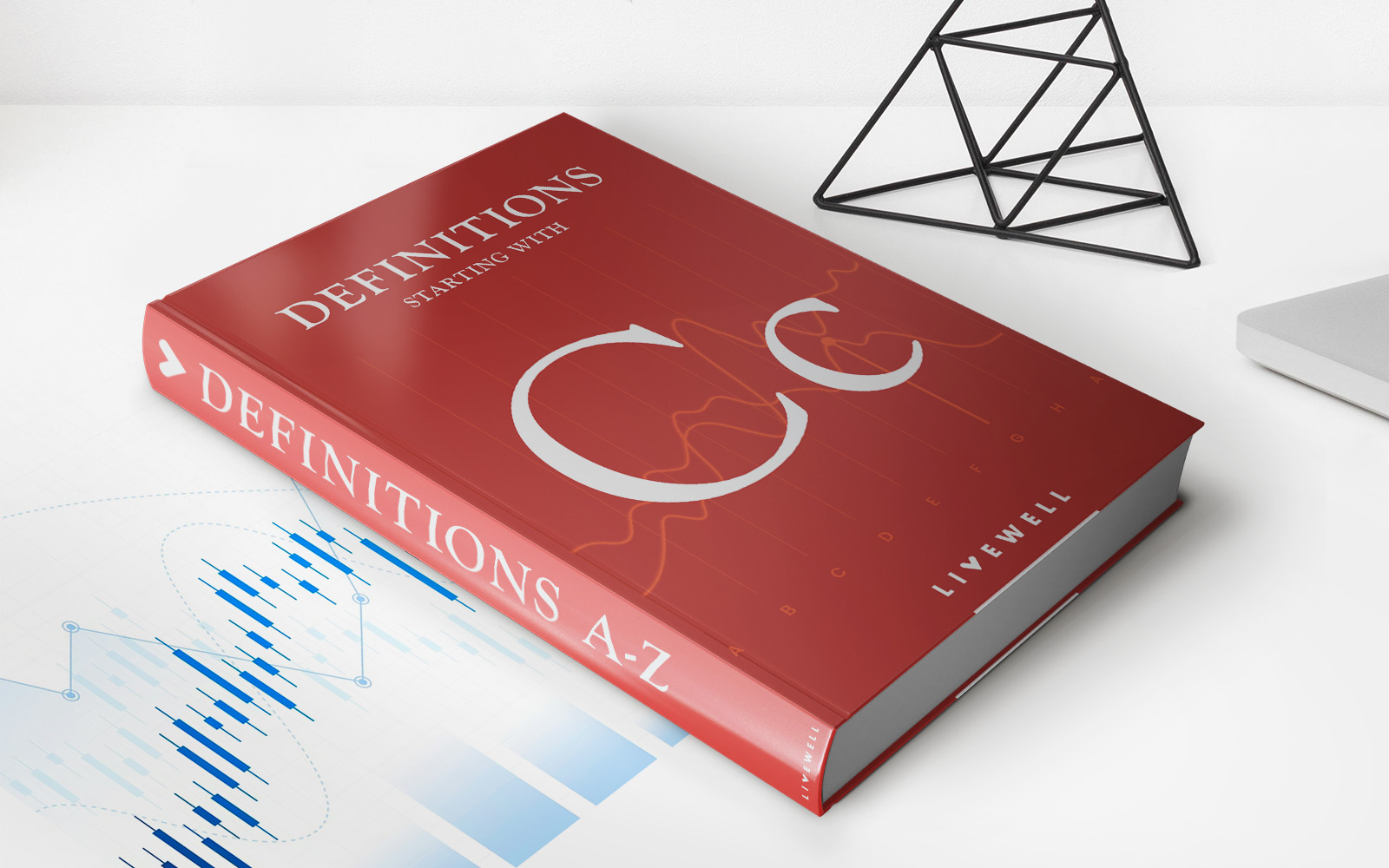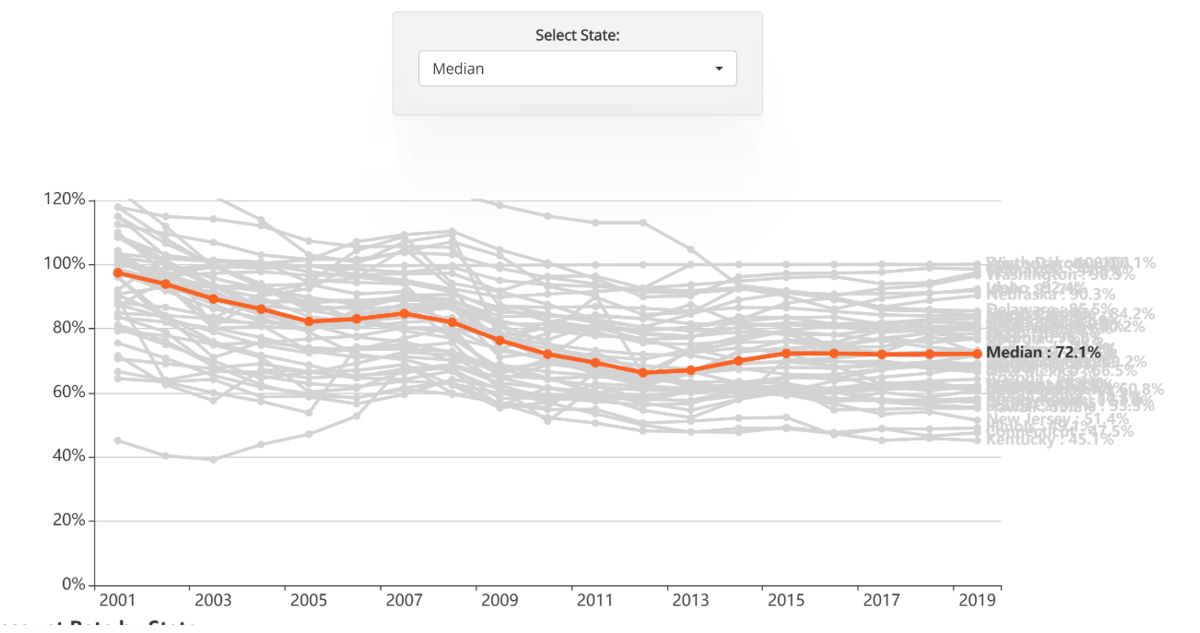Home>Finance>What Is A Simple Capital Structure? What Is A Complex Capital Structure?


Finance
What Is A Simple Capital Structure? What Is A Complex Capital Structure?
Modified: February 21, 2024
Learn about simple and complex capital structures in finance. Understand the differences and implications to make informed investment decisions.
(Many of the links in this article redirect to a specific reviewed product. Your purchase of these products through affiliate links helps to generate commission for LiveWell, at no extra cost. Learn more)
Table of Contents
- Introduction
- Definition of Capital Structure
- Simple Capital Structure
- Characteristics of a Simple Capital Structure
- Examples of Companies with a Simple Capital Structure
- Benefits and Drawbacks of a Simple Capital Structure
- Complex Capital Structure
- Characteristics of a Complex Capital Structure
- Examples of Companies with a Complex Capital Structure
- Benefits and Drawbacks of a Complex Capital Structure
- Factors Influencing Capital Structure Complexity
- Conclusion
Introduction
When it comes to understanding a company’s financial structure, the term “capital structure” often comes into play. Capital structure refers to the way a company finances its operations through a combination of equity and debt. It illustrates the proportion of different funding sources and the relationships between them.
Within the realm of capital structure, there are two main categories: simple capital structure and complex capital structure. A simple capital structure is one that consists of only one class of common stock and no other types of securities, such as preferred stock or debt. On the other hand, a complex capital structure comprises multiple classes of securities, such as different types of stock, convertible bonds, or other forms of debt.
Understanding the difference between simple and complex capital structures is crucial for investors and analysts in assessing a company’s financial flexibility, risk profile, and potential for growth. In this article, we will delve deeper into the characteristics, examples, benefits, drawbacks, and factors influencing both simple and complex capital structures.
Definition of Capital Structure
Capital structure refers to the composition of a company’s financial resources, including the mix of equity and debt used to finance its operations and investments. It represents how a company chooses to obtain and allocate funds from different sources to meet its financing needs.
Equity represents the ownership stake in a company and is typically in the form of common stock. Shareholders who hold equity have a claim on the company’s assets and earnings. Debt, on the other hand, involves borrowing money from various sources, such as banks or bond investors, with the promise of repaying the principal and interest over time.
The capital structure of a company is significant because it determines the risk profile and financial flexibility of the business. It influences factors such as the cost of capital, the ability to raise additional funds, and the distribution of profits among stakeholders.
A company’s capital structure can vary based on factors such as industry norms, market conditions, and management strategy. It is crucial for a company to strike the right balance between equity and debt to optimize its leverage and overall financial health.
Overall, the capital structure reflects the risk and return trade-offs made by a company and influences its ability to fund operations and pursue growth opportunities. By understanding a company’s capital structure, investors and analysts can make informed decisions regarding the company’s financial health, investment potential, and risk.
Simple Capital Structure
A simple capital structure refers to a company’s financial framework that consists of only one class of common stock and does not include any other types of securities such as preferred stock or debt. In other words, there is no complexity in the ownership structure or the rights attached to different classes of securities.
Characteristics of a Simple Capital Structure:
- Single class of common stock: In a simple capital structure, there is only one type of common stock issued by the company. This means that all shareholders have equal rights and claims to the company’s assets and earnings, and there are no variations in shareholder rights or preferences.
- No preferred stock: A simple capital structure does not include preferred stock, which typically offers investors certain preferential rights, such as higher claim to dividends or priority in the event of liquidation. Without preferred stock, all shareholders have the same rights and are treated equally in terms of dividends and other benefits.
- No additional debt securities: Companies with a simple capital structure do not have any other types of debt securities, such as bonds or loans, in their financial makeup. This means that the company is not burdened with complex debt structures or obligations to multiple lenders.
- Stable ownership and control: With a simple capital structure, ownership and control of the company are typically concentrated among a small number of shareholders. This can make decision-making processes smoother and more efficient, as there are fewer parties involved in key strategic choices.
Examples of companies with a Simple Capital Structure:
- Small privately-owned businesses
- Startups in the early stages of development
- Some family-owned corporations
Benefits of a Simple Capital Structure:
- Ease of administration: With only one class of common stock, the administrative burden is reduced, making it easier to manage and administer shareholder rights, dividends, and voting processes.
- Flexibility in decision-making: A simple capital structure allows for quicker and more efficient decision-making processes, as there are no complex shareholder rights or preferences to navigate.
- Reduced conflicts of interest: Without additional classes of securities, there are fewer conflicts of interest among shareholders, leading to smoother operations and less potential for disputes regarding priorities and rights.
Drawbacks of a Simple Capital Structure:
- Limited access to capital: Companies with a simple capital structure may face challenges when trying to raise large amounts of capital, as they cannot issue preferred stock or have complex debt structures that might attract different types of investors.
- Risk concentration: With ownership and control concentrated among a small group of shareholders, a simple capital structure poses the risk of decision-making being driven by a limited perspective or lack of diverse voices.
Characteristics of a Simple Capital Structure
A simple capital structure has several distinct characteristics that set it apart from a complex capital structure. Understanding these key features is essential for assessing the financial framework and risk profile of a company.
- Single class of common stock: One of the defining characteristics of a simple capital structure is that it consists of only one class of common stock. This means that all shareholders, regardless of the number of shares they own, have equal rights and voting power. There are no variations in the rights or preferences attached to different classes of shares.
- No preferred stock: A simple capital structure also does not include preferred stock. Preferred stockholders typically have certain preferential rights over common stockholders, such as the right to receive dividends before common shareholders. In a simple capital structure, all shareholders are treated equally and have the same rights and claims to the company’s assets and earnings.
- No other types of securities: In addition to lacking preferred stock, a simple capital structure does not include any other types of securities, such as convertible bonds or other forms of debt. This means that the company’s financing is solely based on equity, and there are no additional layers of complexity or obligations to creditors.
- Uniform dividend distribution: With a simple capital structure, any profits the company generates are typically distributed to shareholders as dividends on a pro-rata basis. This means that all shareholders receive an equal share of the company’s earnings based on the number of shares they hold. There are no variations in dividend rates or preferences among shareholders.
- Clear ownership and control: A simple capital structure often results in a clear ownership and control structure of the company. It is common for ownership and decision-making authority to be concentrated among a small number of shareholders. This can lead to quicker and more streamlined decision-making processes.
Overall, a simple capital structure is characterized by its simplicity, transparency, and equality among shareholders. These characteristics make it easier to administer, understand, and manage from the perspective of both the company and its stakeholders.
Examples of Companies with a Simple Capital Structure
Several companies have adopted a simple capital structure, consisting of a single class of common stock and no other types of securities or debt. These companies typically have straightforward ownership and control structures, and their financial framework is characterized by its simplicity and transparency. Here are a few examples:
- Google (Alphabet Inc.): The multinational technology company, Alphabet Inc., which is the parent company of Google, maintains a simple capital structure. It has a single class of common stock (GOOGL) listed on the stock exchange, providing equal rights and voting power to all shareholders. This simple structure allows for transparent ownership and decision-making within the company.
- McDonald’s Corporation: McDonald’s, the global fast-food restaurant chain, operates with a simple capital structure. The company has only one class of common stock (MCD) and does not issue any preferred stock or other types of securities. This straightforward structure ensures that all shareholders have equal rights and benefits.
- The Walt Disney Company: The entertainment conglomerate, The Walt Disney Company, maintains a simple capital structure. It has a single class of common stock (DIS) listed on the stock exchange, providing uniform ownership and voting rights to its shareholders. This simplicity allows for transparent governance and decision-making processes.
- General Electric Company: General Electric (GE), a multinational conglomerate, has a simple capital structure consisting of a single class of common stock (GE) traded on the stock exchange. The company does not issue preferred stock or other types of securities, ensuring equality among its shareholders in terms of ownership and voting rights.
- PepsiCo, Inc.: PepsiCo, the global food and beverage company, operates with a simple capital structure. The company has a single class of common stock (PEP), which allows for equal ownership and voting rights among shareholders. This straightforward structure promotes transparency and clarity within the company.
These examples demonstrate how companies from various industries can successfully operate with a simple capital structure. By having a straightforward framework and equal treatment of shareholders, these companies foster transparency, streamlined decision-making, and a clear ownership structure.
Benefits and Drawbacks of a Simple Capital Structure
A simple capital structure, characterized by a single class of common stock and the absence of preferred stock or complex debt securities, offers several benefits and drawbacks for companies. Understanding these advantages and disadvantages is crucial for evaluating the financial framework and risk profile of a business.
Benefits of a Simple Capital Structure:
- Ease of Administration: With a simple capital structure, the administrative burden is reduced. There is no need to manage different classes of securities with varying rights and preferences. This simplicity makes it easier to administer and manage shareholder-related activities, such as issuing dividends or voting on important matters.
- Clear Decision-Making: A simple capital structure allows for quicker and more efficient decision-making processes. Since all shareholders have equal rights and voting power, there are no complex structures or preferences to navigate. This clarity in decision-making can lead to more effective and streamlined governance.
- Reduced Conflicts of Interest: Unlike complex capital structures with various classes of securities, a simple capital structure minimizes conflicts of interest among shareholders. All shareholders are treated equally, and there are no competing rights or preferences. This can foster better collaboration and alignment of interests among stakeholders.
Drawbacks of a Simple Capital Structure:
- Limited Access to Capital: Companies with a simple capital structure might face challenges when attempting to raise large amounts of capital. They cannot issue preferred stock or complex debt structures that often attract different types of investors. This limitation may pose hurdles when pursuing significant expansion, acquisitions, or other capital-intensive projects.
- Risk Concentration: A simple capital structure typically results in ownership and control being concentrated among a small group of shareholders. While this can facilitate decision-making, it also poses the risk of decisions being driven by a limited perspective or lack of diverse viewpoints. This concentration of power can potentially limit the effectiveness of checks and balances within the organization.
- Less Flexibility in Capital Structure: Companies with a simple capital structure have fewer options for capital optimization. Without the ability to issue preferred stock or other types of securities, they might miss out on opportunities to structure their financing in a more advantageous way. This lack of flexibility can limit their ability to adapt to changing market conditions or take advantage of favorable financing opportunities.
In summary, a simple capital structure offers benefits such as ease of administration, clear decision-making, and reduced conflicts of interest. However, it also has drawbacks such as limited access to capital, risk concentration, and less flexibility in structuring financing. Companies must carefully assess these pros and cons when determining the most suitable capital structure for their specific needs and goals.
Complex Capital Structure
A complex capital structure refers to a company’s financial framework that incorporates multiple classes of securities, including different types of stock and debt instruments. Unlike a simple capital structure, a complex one involves various securities that have distinct rights, preferences, and levels of seniority. These securities can include common stock, preferred stock, convertible bonds, and other forms of debt.
Characteristics of a Complex Capital Structure:
- Multiple classes of securities: Companies with a complex capital structure issue different classes of securities, such as multiple types of common stock, preferred stock, or convertible securities. Each class may have varying rights, preferences, and claims to the company’s assets and earnings.
- Varying priority of claims: In a complex capital structure, securities have different levels of seniority and priority in terms of claims to the company’s assets. For example, preferred stockholders may have a higher claim to assets in the event of liquidation compared to common stockholders.
- Convertible securities: A complex capital structure may include convertible securities, such as bonds or preferred stock, which can be converted into common stock based on predetermined terms. These securities offer the potential for investors to participate in the company’s equity growth.
- Additional forms of debt: In addition to equity securities, companies with a complex capital structure may have various forms of debt instruments, such as bonds, loans, or debentures. These debt obligations may have different interest rates, maturity dates, and repayment terms.
- Diverse ownership and control: A complex capital structure often results in a more diverse ownership base with multiple classes of shareholders. This can lead to more complex decision-making processes and potential conflicts among different stakeholders.
A complex capital structure can provide companies with greater financial flexibility and access to diverse financing options. However, it also introduces complexity, potential conflicts, and varying rights and preferences among different classes of securities.
Characteristics of a Complex Capital Structure
A complex capital structure is characterized by the inclusion of multiple classes of securities, each with distinct rights, preferences, and levels of seniority. This arrangement introduces additional complexity and diversity into the financial framework of a company. Understanding the characteristics of a complex capital structure is crucial for assessing the risk profile and financial flexibility of a business.
- Multiple Classes of Securities: One of the key characteristics of a complex capital structure is the existence of different classes of securities. These may include various types of common stock, preferred stock, convertible securities, and debt instruments. Each class has its own unique set of rights, claims, and preferences attached.
- Varying Rights and Preferences: In a complex capital structure, different classes of securities may have different levels of seniority and priority in terms of claims to the company’s assets and earnings. For example, preferred stockholders may have preferential rights to receive dividends before common stockholders.
- Convertible Securities: A complex capital structure often includes convertible securities, such as convertible bonds or convertible preferred stock. These securities provide the option for investors to convert them into a different class of securities, usually common stock, based on predetermined terms and conditions.
- Multiple Forms of Debt: In addition to equity securities, a complex capital structure may involve various forms of debt instruments, such as bonds, loans, or debentures. These debt obligations may have different interest rates, maturity dates, and repayment terms, adding complexity to the company’s financial structure.
- Increased Complexity in Decision-Making: With multiple classes of securities and varying rights, decision-making processes can become more intricate and complicated in a complex capital structure. The interests and preferences of different stakeholders need to be taken into account, potentially leading to more complex negotiations and discussions.
A complex capital structure offers companies access to a wider range of financing options and can provide greater financial flexibility. However, it also introduces complexity, potential conflicts among different classes of securities, and the need for careful management of the diverse interests and preferences of stakeholders.
Examples of Companies with a Complex Capital Structure
Many companies operate with a complex capital structure, incorporating multiple classes of securities to meet their diverse financing needs. These companies often have various types of common stock, preferred stock, convertible securities, and debt instruments in their financial framework. Here are a few examples of companies with a complex capital structure:
- Microsoft Corporation: Microsoft is a technology conglomerate that maintains a complex capital structure. The company has multiple classes of common stock (MSFT, MSFT.V) with varying voting rights and also issued convertible bonds in the past. This structure allows the company to raise capital through different securities and gives investors flexibility in terms of their investment choices.
- Amazon.com, Inc.: Amazon, the e-commerce and technology giant, operates with a complex capital structure. The company has multiple classes of common stock (AMZN, AMZN.V) with different voting rights, as well as issued convertible bonds. This structure provides Amazon with flexibility in financing options and allows the company to raise capital while controlling voting power.
- Intel Corporation: Intel, a leading semiconductor manufacturer, has a complex capital structure. The company has multiple classes of common stock (INTC, INTC.V), including common stock and class B stock, which have different voting rights. This structure enables the company to attract different types of investors and maintain control while raising capital.
- Ford Motor Company: Ford, a multinational automaker, has a complex capital structure. The company has multiple classes of common stock (F, F.V) with different voting rights. Additionally, Ford issued convertible bonds in the past, allowing investors the option to convert them into common stock. This structure aids in diversifying investors’ preferences and provides flexibility in financing.
- AT&T Inc.: AT&T, a telecommunications conglomerate, operates with a complex capital structure. The company has multiple classes of common stock (T, T.V) with varying voting rights. Additionally, AT&T has different series of preferred stock, providing investors with diverse investment options. This structure assists the company in raising funds from different sources and appealing to various investor preferences.
These examples demonstrate how companies from different industries employ a complex capital structure to meet their financing needs. By incorporating multiple classes of securities, these companies have greater flexibility in raising capital and tailoring investment options to attract a wide range of investors.
Benefits and Drawbacks of a Complex Capital Structure
A complex capital structure, consisting of multiple classes of securities with different rights and preferences, offers both advantages and disadvantages for companies. Understanding these benefits and drawbacks is essential for assessing the financial flexibility and risk profile associated with a complex capital structure.
Benefits of a Complex Capital Structure:
- Access to Diverse Financing Options: Companies with a complex capital structure have access to a wide range of financing options. By issuing different classes of securities, such as preferred stock, convertible securities, and various debt instruments, they can attract different types of investors and capitalize on varying market conditions.
- Flexibility in Capital Management: A complex capital structure allows companies to effectively manage their financing needs. They can optimize their capital structure by issuing different types of securities based on the prevailing market conditions, interest rates, and investor preferences, allowing for more efficient management of debt and equity obligations.
- Risk Distribution: By offering various securities with different levels of risks and returns, companies with a complex capital structure can distribute risk among investors. This diversification of risk can make the company more resilient to market fluctuations and provide stability during challenging economic conditions.
Drawbacks of a Complex Capital Structure:
- Increased Complexity: Managing a complex capital structure introduces additional complexity into financial and administrative processes. There may be intricacies involved in administering multiple classes of securities, tracking different dividend payment preferences, and addressing the rights and claims associated with each class. This can result in increased administrative and compliance costs.
- Potential for Conflicts: A complex capital structure may lead to conflicts among different classes of shareholders. The conflicting interests, voting rights, and preferred treatment of certain securities can create tensions and disputes, potentially leading to boardroom conflicts or disagreements on key strategic decisions.
- Higher Financing Costs: The complexity associated with a complex capital structure may result in higher financing costs for companies. For example, issuing preferred stock or convertible securities often carries higher dividend rates or conversion premiums, which can increase the overall cost of capital for the company.
In summary, a complex capital structure offers benefits such as access to diverse financing options, flexibility in capital management, and risk distribution. However, it also brings drawbacks including increased complexity, potential for conflicts, and potentially higher financing costs. Companies must carefully assess these pros and cons when deciding on the appropriate capital structure that aligns with their financial goals and circumstances.
Factors Influencing Capital Structure Complexity
Several factors influence the complexity of a company’s capital structure. These factors can vary depending on the industry, the company’s growth stage, market conditions, and management decisions. Understanding these factors is crucial for companies to determine the appropriate level of complexity in their capital structure.
Industry Norms:
The nature of the industry plays a significant role in shaping capital structure complexity. Certain industries, such as technology or pharmaceuticals, may have higher capital requirements and more volatile cash flows, leading to a greater need for diverse financing options. Industries with higher risks may opt for complex capital structures to optimize risk-sharing and attract investors with different risk appetites.
Business Growth Stage:
The growth stage of a company often influences its capital structure complexity. Early-stage startups may have simpler capital structures, primarily relying on equity financing and limited debt. As companies mature and require larger amounts of capital for expansion, they may introduce additional classes of securities, such as preferred stock or convertible bonds, to access diverse sources of funding.
Market Conditions:
Market conditions, including interest rates and investor preferences, can influence capital structure complexity. During periods of low interest rates, companies may be inclined to issue debt securities, taking advantage of the lower borrowing costs. Investor demand for certain types of securities, such as convertible bonds, can also impact a company’s decision to introduce complexity into its capital structure.
Financial Risk and Flexibility:
Companies with higher financial risk profiles or those operating in volatile industries may choose complex capital structures to mitigate risk. By diversifying their funding sources and incorporating various classes of securities, companies can balance their capital structure, reducing dependence on a single source of financing and enhancing financial flexibility.
Tax and Regulatory Considerations:
Tax laws and regulations can influence the choice of capital structure complexity. Companies may structure their debt securities to take advantage of tax incentives or optimize their tax liabilities. Regulations regarding preferred stock or other types of capital instruments may also influence a company’s decision to adopt a complex capital structure.
Management Strategy:
The management’s strategy and objectives also play a significant role in determining the complexity of a company’s capital structure. Some management teams may prioritize financial flexibility and access to a range of financing options, leading to a more complex capital structure. Others may prefer simplicity and stability, opting for a simpler capital structure that aligns with their strategic goals.
Overall, companies need to carefully consider these factors and strike a balance between the benefits and drawbacks associated with capital structure complexity. By aligning their capital structure with their financial goals and external market factors, companies can optimize their financing options and risk management strategies.
Conclusion
Understanding the differences between simple and complex capital structures is essential for evaluating a company’s financial framework and risk profile. A simple capital structure consists of a single class of common stock, while a complex capital structure includes multiple classes of securities with distinct rights, preferences, and levels of seniority.
A simple capital structure offers benefits such as ease of administration, clear decision-making processes, and reduced conflicts of interest. However, it has limitations in terms of accessing capital and potential risk concentration. On the other hand, a complex capital structure provides companies with diverse financing options, flexibility in capital management, and risk distribution. However, it introduces complexity, potential conflicts, and potentially higher financing costs.
The decision to adopt a particular capital structure depends on factors such as industry norms, business growth stage, market conditions, financial risk, tax considerations, and management strategy. Companies must carefully weigh the benefits and drawbacks associated with capital structure complexity to ensure it aligns with their goals and circumstances.
Ultimately, the optimal capital structure for a company strikes a balance between simplicity and complexity, considering its financing needs, risk tolerance, and growth aspirations. By carefully evaluating and adapting their capital structure, companies can enhance their financial flexibility, attract a diverse range of investors, and position themselves for sustainable growth in the dynamic business landscape.














